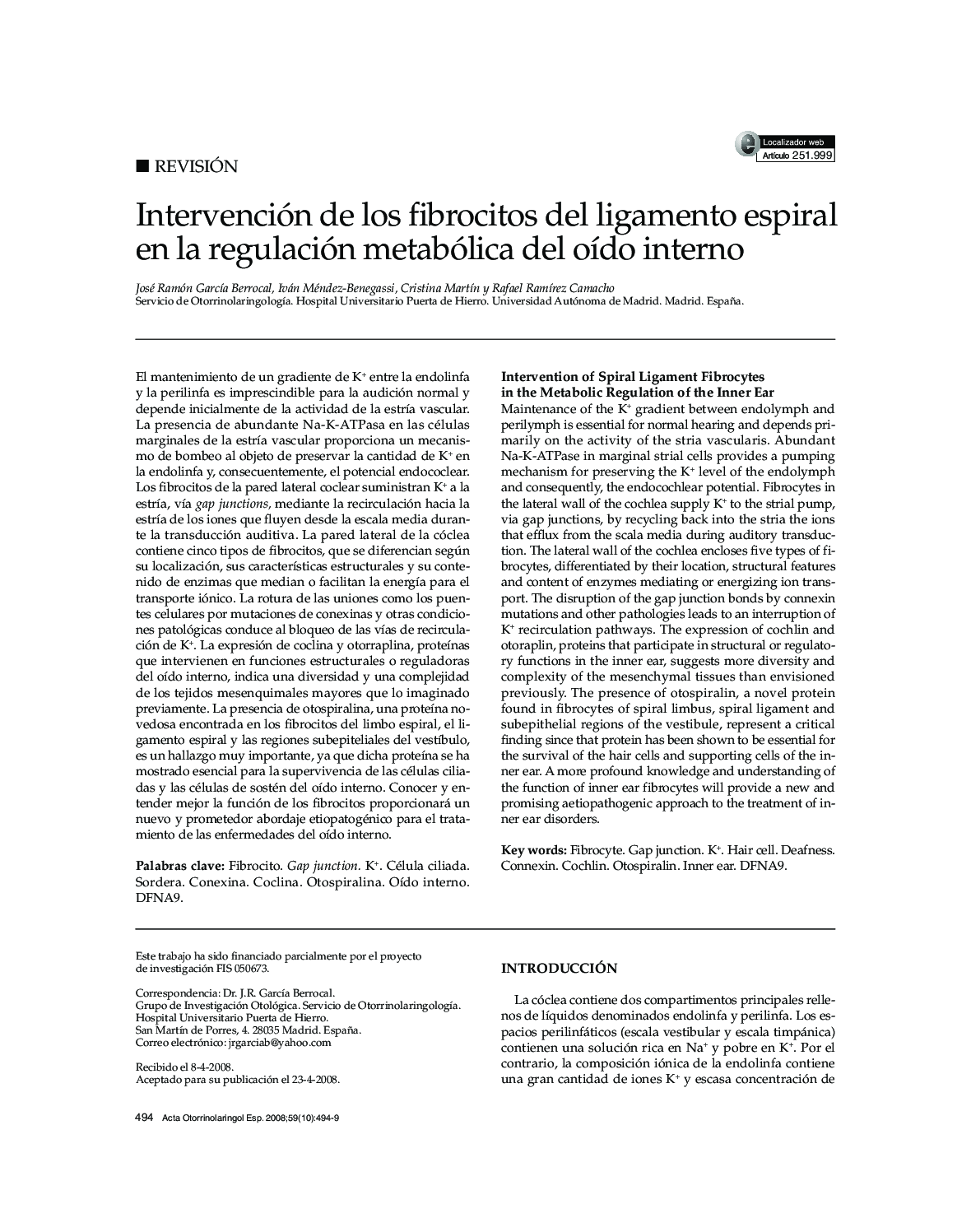| کد مقاله | کد نشریه | سال انتشار | مقاله انگلیسی | نسخه تمام متن |
|---|---|---|---|---|
| 4102422 | 1268825 | 2008 | 6 صفحه PDF | دانلود رایگان |

El mantenimiento de un gradiente de K+ entre la endolinfa y la perilinfa es imprescindible para la audición normal y depende inicialmente de la actividad de la estría vascular. La presencia de abundante Na-K-ATPasa en las células marginales de la estría vascular proporciona un mecanismo de bombeo al objeto de preservar la cantidad de K+ en la endolinfa y, consecuentemente, el potencial endococlear. Los fibrocitos de la pared lateral coclear suministran K+ a la estría, vía gap junctions, mediante la recirculación hacia la estría de los iones que fluyen desde la escala media durante la transducción auditiva. La pared lateral de la cóclea contiene cinco tipos de fibrocitos, que se diferencian según su localización, sus características estructurales y su contenido de enzimas que median o facilitan la energía para el transporte iónico. La rotura de las uniones como los puentes celulares por mutaciones de conexinas y otras condiciones patológicas conduce al bloqueo de las vías de recirculación de K+. La expresión de coclina y otorraplina, proteínas que intervienen en funciones estructurales o reguladoras del oído interno, indica una diversidad y una complejidad de los tejidos mesenquimales mayores que lo imaginado previamente. La presencia de otospiralina, una proteína novedosa encontrada en los fibrocitos del limbo espiral, el ligamento espiral y las regiones subepiteliales del vestíbulo, es un hallazgo muy importante, ya que dicha proteína se ha mostrado esencial para la supervivencia de las células ciliadas y las células de sostén del oído interno. Conocer y entender mejor la función de los fibrocitos proporcionará un nuevo y prometedor abordaje etiopatogénico para el tratamiento de las enfermedades del oído interno.
Maintenance of the K+ gradient between endolymph and perilymph is essential for normal hearing and depends primarily on the activity of the stria vascularis. Abundant Na-K-ATPase in marginal strial cells provides a pumping mechanism for preserving the K+ level of the endolymph and consequently, the endocochlear potential. Fibrocytes in the lateral wall of the cochlea supply K+ to the strial pump, via gap junctions, by recycling back into the stria the ions that efflux from the scala media during auditory transduction. The lateral wall of the cochlea encloses five types of fibrocytes, differentiated by their location, structural features and content of enzymes mediating or energizing ion transport. The disruption of the gap junction bonds by connexin mutations and other pathologies leads to an interruption of K+ recirculation pathways. The expression of cochlin and otoraplin, proteins that participate in structural or regulatory functions in the inner ear, suggests more diversity and complexity of the mesenchymal tissues than envisioned previously. The presence of otospiralin, a novel protein found in fibrocytes of spiral limbus, spiral ligament and subepithelial regions of the vestibule, represent a critical finding since that protein has been shown to be essential for the survival of the hair cells and supporting cells of the inner ear. Amore profound knowledge and understanding of the function of inner ear fibrocytes will provide a new and promising aetiopathogenic approach to the treatment of inner ear disorders.
Journal: Acta Otorrinolaringológica Española - Volume 59, Issue 10, December 2008, Pages 494–499